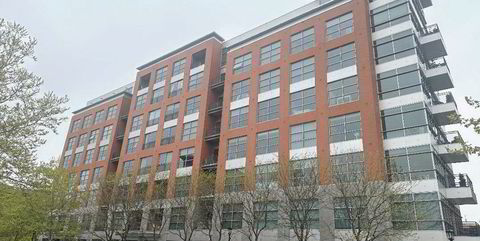China’s Belt and Road policy could be the biggest thing for shipping between Asia and Europe since Marco Polo, according to experts at a London briefing.
But many unanswered questions surround the modern maritime Silk Road mega-project.
Hong Kong transport secretary Frank Chan said the 9,000-kilometre (5,600-mile) route — which embraces 60 countries with 60% of the world’s population, currently representing 21% of global gross domestic product (GDP) — could prove a huge boon.
“By 2050, the Belt and Road is estimated will contribute 80% of world GDP growth,” Chan said at the London International Shipping Week event on the initiative.
Liu Xiaoming, China’s ambassador to the UK, said: “It is my firm belief that the Belt and Road initiative will build up new momentum for global trade. It has forged close ties between the shipping sectors of different countries. The 21st century is the century of the sea.”
Tangible benefits to countries along the route have already included $3trn of trade with China in the three years after its inception in 2014, Liu said. And he noted the development is pushing China to invest in global infrastructure and take a greater role in regulatory bodies, including the International Maritime Organization.
Clemence Cheng, executive director of Hutchison Ports and managing director of its UK Port of Felixstowe, said 86% of the group’s total container throughput of 84 million teu is already related to the Belt and Road route.
But the project is immense; almost unimaginable amounts of investment are required.

Wei Shi, deputy general manager and chief risk officer for the Bank of China in London, said $990bn may be needed initially, and event chair Harry Theochari, global head of transport at law firm Norton Rose Fulbright, said the total cost could rise to $27trn by 2030. “Where is this money coming from?” he asked. “I have never seen anything remotely like this project.”
And it is possible, according to other estimates, that the focus is on the wrong direction. Some experts believe the world’s largest trade (and thus shipping) corridors by 2030 will be between economically advanced Asian countries such as China, Japan and South Korea on the one hand, and the continent’s emerging nations such as Vietnam and Thailand on the other.
Other nations will also be drawn into the Belt and Road orbit. Australia and Brazil will export huge amounts of iron ore for all the infrastructure investment required, and even maritime executives in Vancouver, Canada, are looking into potential knock-on benefits.
Peter Lu, head of the EMEA and China desk in London at law firm White & Case, said Chinese government encouragement for any projects associated with Belt and Road is making it easier to get authority for overseas investment after guidance issued last month tightened capital controls.
Some $140bn of Chinese government funding for Belt and Road has been promised, but Rongrong Huo, HSBC head of China and renminbi business development, said it is up to the private banking sector to come up with solutions.
“You cannot rely on Chinese or public-sector money. It is not sustainable,” she said. “State funds should be used to leverage private investment.”
Lease financing groups, which, alongside export credit agencies, have been so important in getting ships built in recent years, will also have to take up the challenge, Theochari said. He sees the boost to trade from Belt and Road potentially propelling shipping markets back to the giddily profitable days before the 2007 financial crash.

Geopolitical challenges remain, however, not least security and political risks in many of the countries along the way. India’s competition with China over territory — and possibly trade — is one big unknown.
On the positive side, Cheng regards Belt and Road as a Chinese attempt to lessen tensions and the possibility of war by championing trade links. Wei also sees it as a move to make the whole world more interconnected and therefore inter-reliant, while Huo is among those saying it reflects Beijing’s response to the fact that other countries are already cheaper for manufacturing.
Chan thinks the project will allow populations along the route to move from low-value economies to middle-class lifestyles.
“Along the Belt and Road corridors, massive opportunities and demands for quality maritime and shipping services are emerging,” he added.
But one elephant in the room was not addressed: how does all this burgeoning transport and trade fit in a world where carbon emissions are supposed to be cut, not increased?




